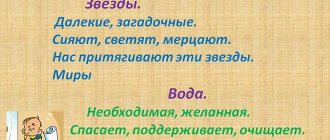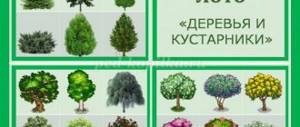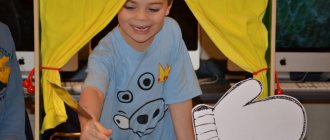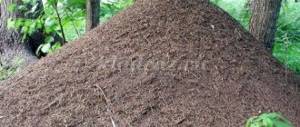Requirements according to regulatory documents
First of all, you need to familiarize yourself with the requirements established at the state level. According to regulatory documents, in group premises it is prohibited:
- place aquariums, animals and birds;
- place flowers in pots on the windowsills in the rooms where children play and sleep;
- grow poisonous and thorny plants.
Particular attention is paid to the safety of children. Flowerpots must be placed on special stands or shelves that must be secured. The height of plants in pots should not exceed 1 meter. Care and responsibility for the corner of nature in the kindergarten is carried out by the staff of the institution; children can water it.
What is a corner of nature in a preschool educational institution
The corner is part of the developing subject-spatial environment. It is issued in each group or located in a separate room in the kindergarten. When creating a subject-development space with an environmental focus, the teacher must take into account that SanPiN 2.4.1.3049-13 does not allow the following:
- placement in groups of living beings: birds, animals and fish;
- place plants on windowsills and in the bedroom;
- living creatures on the territory of the preschool educational institution must be safe and healthy.
A corner of nature in a preschool educational institution
Important! Before creating a space, the teacher must familiarize himself with the requirements of the Federal State Educational Standard for Educational Education for this activity, as well as study the programs and methods of environmental education.
Additional requirements for organizing a corner of nature
In any preschool institution, management staff monitors the educational process in each group. And one of the mandatory norms of the program is the creation of a nature corner in the kindergarten group. When organizing it, educators should adhere to the following standards:
- The design should be bright and colorful, and the plants should be interesting.
- A nature calendar is welcome.
- All materials should be placed at child eye level.
- Equipment necessary for caring for plants that can be used by children should be stored in containers with tight-fitting lids. This may include: loosening sticks, sponges and rags.
- If there is natural material in the corner (stones, twigs, moss), then it should be placed in separate containers.
- The equipment necessary for conducting experiments should not contain sharp or cutting objects.
Recommendations and requirements for material selection
Requirements for organizing natural space:
- bright and colorful design;
- safe furniture and equipment;
- nature calendar for each age group;
- location of exhibits at the child’s eye level, in an area accessible to him;
- inventory is located in closed containers;
- natural material in the group must be in sufficient quantity;
- Decorations are acceptable, but must be in keeping with the environmental theme.
How to learn letters correctly with a child 3-5 years old
Requirements for selecting residents:
Planting in spring
- only typical representatives of a particular region;
- for children, caring for the inhabitants of the corner should be accessible (of course, with the participation of a teacher), therefore, mainly unpretentious perennial plants are selected;
- it is necessary to select interesting plants: bright, with unusual leaves or flowers, in order to hold the attention of preschoolers;
- each type of plant should be represented by two or more representatives so that children can compare them with each other and with other inhabitants;
- Only safe plants can be placed.
It is necessary to conduct classes according to the seasons:
- spring - planting, environmentally friendly activities;
- summer - work in the garden on the site, observing growth and flowering;
- winter - emphasis on inanimate nature phenomena, or activities with indoor plants;
- autumn - holding autumn fairs, studying autumn nature.
Healthy! Ecology is a science that a preschooler must comprehend from the initial stage of education. And the natural area plays an important role in learning. With properly organized activities, it is possible not only to form a system of concepts in students, but also to instill labor skills.
Requirements for plant selection
The plants in the nature corner in the kindergarten should be typical of the area where the children live. Of course, no one says to grow trees, but children need to understand their surroundings.
It is important to remember that children will strive to help teachers care for the plants. Therefore, it is necessary to choose species that require minimal attention so that little researchers can take care of them.
When decorating a corner of nature in a kindergarten group, you need to choose visually attractive flowerpots. They must hold the child's attention. It is very good when flowers have different leaves in size, color, shape, structure. This helps children identify not only general, but individual characteristics. Understanding the diversity and versatility of nature determines life values.
When thinking about children, don't forget about plants. Some species require special environmental conditions for normal functioning. Your choice should be made on those who are able to take root in the team of the child care institution.
The meaning of a corner of nature
Children do not always have the opportunity to care for plants at home. Many parents do not keep flowerpots. But in the garden such a corner is a must. And this is the rule, because it performs many important functions:
- Cognitive. Children learn about the world that surrounds them, get acquainted with the structure of plants, and strive to understand them. Little researchers awaken curiosity, attention, and observation.
- Ecological and aesthetic. The design of a corner of nature in a kindergarten depends on the aesthetic taste of the teacher. If it is beautifully designed, it has many details (houses, trees, birds and other animals are drawn), then children will definitely appreciate it.
- Educational. The children develop a caring attitude towards flora, develop a sense of responsibility for green spaces, and an awareness of the significance of their actions.
- Practical. Children are accustomed to work, to the rules of caring for pets, they develop diligence and initiative.
- Wellness. Many plants have beneficial properties: they filter the air and absorb negative bacteria. In addition, there is always fresh air in rooms where there are flowerpots.
A corner of nature in our group
Elena Kandakova
A corner of nature in our group
Good day to everyone who has visited the page!
In October 2020, I got excited about the idea of decorating a new corner of nature .
The purpose of creating a corner of nature is to promote the development of the child as a whole, his formation as an individual, satisfy his needs in various types of activities, and teach children an environmentally appropriate lifestyle.
To achieve this goal, I created conditions for the formation in children of elements of environmental culture, environmentally literate behavior, and the implementation of new ideas about the universality and intrinsic value of nature .
to buy a ready-made corner , my budget doesn’t allow it, so I made it from scrap materials. The administration of our kindergarten helped us buy ceiling tiles, I pasted them on the wall between two windows and started decorating them. I downloaded suitable pictures for the calendar from Internet resources, printed it out, laminated it (using tape, inserted arrows that I took from old clocks and games. The result was a nature that takes into account seasonality, time of day and days of the week.
I drew a tree on a piece of whatman paper, colored it and cut it out. The tree was glued to the finished wall of ceiling slabs. Now the guys and I can change our “outfit”
trees by season.
Our tree in autumn
Tree in winter
Tree in spring
The summer corner will be decorated according to the season.
“dress” also help children determine the time of year and seasonal changes.
according to the season.
Doll "Oseninka"
Doll "Winter"
Doll "Vesnyanka"
In the corner there is a selection of paintings on seasonal changes, which we attach to a fishing line using paper clips.
All pictures are collected and distributed into envelopes and albums, with the appropriate inscription.
nature calendar contains a selection of riddles, omens, proverbs and sayings about each season.
All removable objects (leaves, flowers, animals, birds, etc.)
from
a corner of nature are put into a box.
For each season, my students and I make compositions from natural and available materials.
Children record systematic observations of weather conditions in the nature . Every day we talk with our children about weather changes and find out why they happen. Children of the older subgroup mark weather features with conventional signs. Working with a calendar develops visual, figurative and schematic thinking in preschoolers.
available in the corner helps to consolidate in children the knowledge that they receive in FCCM classes and what they cannot see for themselves. In such cases, children's literature comes to the rescue, in which everything is shown step by step in colorful illustrations. In their free time, children study this literature. If they have questions, I help them find answers.
In the corner of nature there is a small number of indoor plants: begonia, gloxinia, cactus (not thorny, since group is located on the north side, there is little sunlight. The children and I take care of the rest of the plants in a small mine-flower garden. The flower garden is located in the passage, near swimming pool
Throughout the school year, we teach children how to care for indoor plants. Children learn to care for plants: water, wipe, loosen, spray. For a child to understand his inseparability from nature , it is important to surround him with it.
Watering flowers is one of the difficult techniques. We need to teach children that not all flowers are watered equally. Some flowers do not like moisture, others suffer from a lack of it. Children also learn to take into account the time of year: during periods of rapid growth, water intensively; during dormancy, watering is reduced.
We learn to wipe dust from plant leaves.
Children learn to spray indoor plants using a spray bottle.
Collect dry leaves and loosen the ground.
Learning to plant flowers.
Learning to measure (using a measuring stick)
and monitor the growth of plants, recording and sketching all changes.
There is a mini garden on the window, which has a different name every year. This year the children named our vegetable garden "Aunt Rose's Garden"
.
Why did we call the garden that? Yes, because the guys and I made Aunt Rose from natural material , and she settled in our garden!
Together with the children, we grow onions and garlic in a group .
, seedlings of outdoor flowers and vegetables
(parsley, lettuce, cucumbers, beets)
. Creating a vegetable garden helps develop curiosity and observation in children. Helps to better understand plant life and develop research skills. Helps expand children's understanding of plants as living organisms, and the conditions necessary for growth and development. Develops aesthetic feelings, instills a desire to work and the ability to see the result of one’s work.
Children learn to plant seeds and vegetables. For seedlings, we used containers from kinders, yoghurts, sour cream, etc. For soil, we used both soil and sawdust (during observation, the children noted that onions grow better and faster in sawdust)
.
So we planted our onions and garlic! Now we will wait and watch.
Let's start planting seeds of outdoor flowers and vegetables.
Planted a vegetable garden! Now we’ll water it and watch the sprouts!
The guys are looking forward to the first shoots...
In their free time from classes, children look at the collected natural “treasures”
, that’s what they call
natural material (shells, pebbles, cones, nuts, etc.)
The corner of nature in our group is a place of systematic work and observation. Where children have the opportunity to be as active and independent as possible. In everyday life, my preschool children develop a cognitive attitude towards nature , a desire to care for objects, good feelings, responsibility, and humanity.
Thank you all for your attention! All the best!
Recommendations for selecting plants for the younger group
The most important thing at the age of 2-3 years is to learn to distinguish the main components of ornamental crops: leaves, stems, flowers. Therefore, the nature corner in the junior kindergarten should have large flowerpots with plants that have large leaves, massive stems, and buds. There shouldn't be many of them. 3-4 representatives of the flora are enough for kids to pay attention to them.
You need to choose specimens that require minimal care: watering once every two to three days, loosening the soil and cleaning the leaves from dust. These tasks will be feasible for little fidgets. Suitable plants: geranium, ficus, begonia, coleus, balsam, fuchsia.
DIY for the little ones
An example of organizing space in the younger group is shown in the photo. It is very easy to create a nature corner in a kindergarten of this kind. Please note that there are very few plants, but each one is very different from the next.
A small fence was made separately to separate the zones. A great idea is to plant small plants in transparent pots. For example, phytonia. It is unpretentious, grows well in the shade and does not require daily watering. It will be interesting for the children to watch how the leaves appear and how a small world develops inside the pot. They will be happy to take care of such a corner of nature in kindergarten.
Nature corner in kindergarten preparatory group
- Indoor plants - you can choose flowering and non-flowering ones so that you can compare. Let the plants be varied: climbing, deciduous, succulents.
- Mini-garden - you can grow onions or oats with your children. Do the planting in class. Let the children sketch the changes in the growth of the seedlings.
- Aquarium – introduce the inhabitants of the aquarium and its contents.
- Animals – a guinea pig is suitable for the garden. Let the children feed her and look after her.
- Area for studying natural materials - leaves, acorns, nut shells, shells. You can use natural materials in your creativity.
- Nature calendar.
Filling a corner of nature in the middle group
Between the ages of 2 and 4, children often enjoy attending kindergarten. The middle group of nature corners can already be diversified with a wider range of plants. At this age, kids understand the differences well and can care for plants in different ways. For example, wipe smooth leaves with a cloth, and brush off terry leaves with a brush. It will be useful to choose flowers with different shades. Children's favorite activity is to spray leaves with a spray bottle. Give them this opportunity by placing the plants in a separate container or sink, and show the children how to do it correctly.
In the middle group, the number of plants can be increased to 5-7 units. Replenish your assortment with agave, chlorophytum, zamia, and asparagus.
Tree nature corner in kindergarten
- You can make your own tree for study, preferably with replaceable leaves. Prepare orange and green foliage. In winter it will be without leaves.
- Children can explore the living ficus, which resembles a tree.
- As an option, harvesting a tree with fruits, changing seasonally during rotation.
- Photo wallpaper of a tree with its inhabitants.
DIY decoration in the middle group
We offer to diversify the corner of nature in kindergarten with your own hands using panels. Take a wooden frame and place a printed image of the landscape of your native land in it. Decorate the frame around the perimeter with beads and beads. You can make small original flowers from ribbons or paper that will become an interesting addition.
Another option for a panel is a herbarium. You can also involve children in creating the composition. Take a larger format, for example A3, so that the details are clearly visible. Use dried leaves and flowers to create a story from a fairy tale or lay out a landscape. Glue everything with PVA glue and secure it with varnish on top. Insert the panel into the frame and place it in a corner of nature.
Natural corner in kindergarten: DIY decoration
When decorating a corner of nature in a preschool educational institution with your own hands, remember that it should contain a lot of visual material. The most significant of them is the nature calendar.
In a group for kids, it will be enough to place a picture depicting the current season. And also a doll dressed for the season.
For older children, there is a manual on the wall with pictures of the seasons and weather conditions with a moving arrow in the center. After the walk, you can discuss the weather with the children and move the arrow to the desired image. Also, in a corner of nature, it is necessary to set aside a place for children’s drawings on the topic of the observations made.
In older groups, children are introduced to symbols for indicating the weather. Every day, preschoolers mark weather fluctuations with conventional signs and at the end of the month they sum up the results: how many days were cloudy, how many sunny, windy, rainy. By the end of the year, the children will have an idea of the climate in their region.
A beautiful corner of nature in kindergarten
Often, a natural and ecological corner in a kindergarten is combined into one and, in addition to the above, the following is placed in it:
- a set of pictures with birds, insects, domestic and wild animals, plants;
- dummies of vegetables and fruits;
- children's crafts made from natural materials;
- equipment for conducting experiments - molds, containers of different volumes, spatulas, measuring spoons. You can conduct didactic games and experiments with water, sand, stones, shells, and clay to study their properties.
Activities in a corner of nature contribute to the development of work skills in preschool children. Already in the younger group, the teacher involves children in carrying out feasible work assignments. In the older group, corner duty is introduced.
Working in a corner of nature gives children a lot of pleasant experiences. Preschoolers learn to understand the world around them, to notice both general and individual signs of natural objects, which leads them to an understanding of the uniqueness and diversity of living organisms. Communication with nature stimulates children's thirst for creativity. A properly organized living corner is a powerful educational tool in the aesthetic, psychological and moral development of children.
Senior group: choosing plants
Children in the older group continue to develop the ability to compare objects and identify similar and different features. The focus is on the process of plant growth and development. The corner in the group must be replenished with new species: tradescantia, netcreasia, ivy, ficus, fern, cyclamen, begonias, amaryllis.
There are two interesting plants: spathiphyllum and anthurium. The first symbolizes the feminine principle. It produces long white flowers similar to calla lilies. Inside they are curved like a spiral. The second - anthurium - has a large red bud. The central leaf is round in shape, and in the middle there is a long yellow stamen, symbolizing masculinity. It is customary to place these two plants side by side.
Design ideas
Animals cannot be placed in a corner of nature. But you can simulate their presence. Let's offer some ideas.
- Artificial aquarium. Take an empty aquarium and place underwater images on the back glass. Let there be corals, algae, fish. Fill the aquarium itself with artificial plants and rocks. Add a tower or beautiful shells. For a fun addition, attach toy fish at different heights to simulate their presence.
- Bird house. Make a tree from the branches and place a birdhouse on it. Hang small artificial birds: on branches, in the house.
- Fox mink. Cut out a bush from cardboard and color it. Make a hole at the bottom. Secure the cardboard to the floor. Lay a dark cloth behind it. The hole will imitate a mink. You can put a soft or rubber fox in it.
Preparatory group
At this age, children are already quite mature, and simple observation is no longer enough for them. They actively take part in replanting and become familiar with plant propagation methods. They develop basic knowledge:
- what conditions do plants need to grow better - light, water, warmth;
- what is their external structure?
- how you can grow a new seedling using a leaf or part of a flowerpot.
You can choose absolutely different plants for the group, the number of which can be increased to 10-12 units.
You can surprise children with an unusual design of a corner of wildlife in a kindergarten by placing there a beautiful plant called “Bride and Groom”. This flower is unusual in that it has different shades and is most often sold in blue and white. They plant two species in one pot, and when they begin to bloom, an amazing picture appears: one half is blue, the other is white. That’s what they called it – “Bride and Groom”, although scientifically it is called campanula.
Ideas for decoration in the preparatory group
Let's look at a photo of the design of a nature corner in a kindergarten in the preparatory group. It will be very useful for children to take part in the planting process. You can conduct experiments with:
- peas;
- pepper;
- onions;
- carrots;
- dill, parsley;
- flower seedlings.
You should definitely keep a diary to note changes. To visually understand the growth cycle, it is recommended to place a stand in a corner of nature that will have images showing the phases of plant development - from a seed to a full-fledged sprout.
What is important to consider when creating a natural corner in a kindergarten?
A living corner in a kindergarten is designed for each age group, taking into account sanitary standards, the age of the pupils and their capabilities.
SANPIN rules for preschool educational institutions 2.4.1.3049-13 clause 6.11. It has been established that placing animals, aquariums and birds in group rooms (dressing room, group room, bedroom, buffet, toilet) is not allowed.
Therefore, the main inhabitants of the corner will be plants: indoor flowers and a mini garden on the windowsill. The mini garden is made up of garlic, onions, oats and other crops grown in boxes in autumn and winter.
Requirements for the selection of plants
- Work in a corner of nature should be accessible to children in terms of time and strength, so plants are selected that are unpretentious in food and care.
- Plants should not be harmful to the health of children.
- Flowers for a corner of nature in a preschool educational institution should be selected from different types for comparison.
- When placing plants, you need to take into account their biological needs.
- The design of a corner of nature in a preschool educational institution must be done in such a way that preschool children can come up, observe, and do some work.
- Plants should have an attractive appearance that can attract and retain the unsteady attention of children.
The best corner of nature
Features of choosing indoor flowers for different groups
A corner of nature in the younger group should contain no more than 4-5 types of unpretentious indoor flowers. These are plants with distinct flowers, leaves and stems that bloom long and beautifully. Primrose, balsam, ficus, and geranium are perfect.
A corner of nature in the middle group should contain 5-6 species of plants. These are flowers with different sizes and shapes of leaves. In particular, agave, asparagus, chlorophytum.
In the corner of nature in the older group, 6 to 7 types of flowers are placed, 2 or 3 copies each. Plants must have different stems (creeping, climbing) and have bulbs or corms. These include ivy, tradescantia, amaryllis.
For the preparatory group, the number of plants is 6-7 species, which differ in the method of reproduction (bulbs, viviparous). For example, saxifrage, bryophyllum, cyperus.
When planning the design of a nature corner in a kindergarten, do not forget to provide a place to store work equipment, these could be:
- spray,
- watering can,
- cloths for wiping leaves,
- stick for loosening the soil,
- cups for seedlings.
In younger groups, the teacher monitors the cleanliness of the corner and instruments. In the senior and preparatory groups, this can be done with children (appoint a person on duty). The work of preschool children in a corner of nature is carried out in accordance with the curriculum.
Nature calendar
Any corner of nature in a kindergarten will look unfinished if it does not have a nature calendar with images:
- weather changes;
- seasons;
- days of the week.
Starting from the older group, children note what time of year it is, what day it is and what the weather is like outside. In the younger group, as a game, they are invited to dress the doll in the same way as the children dressed for a walk. In this way, the children remember the difference between winter and summer, and how to dress in different weather.
In addition, the teacher must ensure that each group has:
- large quantities of toy vegetables and fruits;
- play sets with images of animals and birds;
- albums and pictures with the seasons;
- children's drawings about nature, crafts made from natural materials;
- tools for creating crafts - materials, glue;
- various tools for caring for plants and conducting experiments;
Children in the preparatory group can be introduced to such objects as a magnifying glass, a microscope, and scales.
Design of a corner of wildlife according to the Federal State Educational Standard
The Federal State Educational Standard for Educational Education presupposes a number of design requirements. This is appropriate for the age of children, and safety, and poly saturation. When preparing, the teacher must rely on the parameters of the map of the developing subject-spatial environment according to the Federal State Educational Standard for Education.
In the younger group
Young children do not know how to maintain attention on one subject for a long time. They need frequent changes of activities (literally every 5-10 minutes), rest breaks, and most importantly - the use of gaming techniques and techniques, clear visibility.
Teaching preschoolers to read - what it gives and when you can start teaching
The junior group corner may include the following:
- plants with clearly visible parts;
- bright and long-flowering plants;
- plants with variegated leaves.
From the whole variety, the teacher must select 3-4 species and conduct a detailed study, indicating the parts of the plant and their brief characteristics. It is desirable that children can touch parts of plants and flowers with their hands.
Corner in the younger group
In average
Middle preschoolers already have more stable attention, but the leading activity is still play. The teacher can expand the arsenal of plants being studied, as well as involve children in caring for plants. The simplest actions are already available to middle preschoolers:
- watering plants;
- spraying from a spray bottle;
- wiping large sheets with a damp cloth;
- loosening the earth.
Children of the middle group identify 4-5 plant species, and also independently choose tools for care. Parents can be actively involved to enrich the environment.
In senior
With the help of an organized space, they actively develop thinking operations: comparison, generalization, classification by characteristics, and also develop the ability to observe plants, their growth and changes according to the seasons of the year. The following should be included:
- plants with different types of stems (climbing, creeping, straight);
- bulbs and tubers;
- more than 9 different species (ivy, fern, begonia, amaryllis, etc.).
Note! Children can prepare a report at home about a specific type of plant. Their attention and speech are already more developed, which allows them to make classes long and exciting. The corner must have visual displays, as well as books on plant care that children can read.
In preparatory
The preparatory group implies a significant expansion of the pupils’ knowledge, therefore the main task is the formation of a system of elementary knowledge:
- about the types of dependence of plants on the season, as well as on various climatic conditions;
- about methods of plant propagation;
- about care options for residents.
Older schoolchildren are able to study for 20 minutes, so the teacher has a wide variety of possibilities for constructing lessons. This group contains up to 15 types of plants that children study throughout the year: tradescantia, succulents, begonias, etc.).
As for inanimate materials, they must be in each group. Also, the initial arsenal of materials and techniques for working with them expands from the junior group to the preparatory group.
Inanimate materials
Additional Information! Among the methods of studying inanimate natural phenomena, experimentation is the main one. Therefore, among the tools there should be experimental ones, as well as a large arsenal of objects for study: water, sand, clay, etc.






